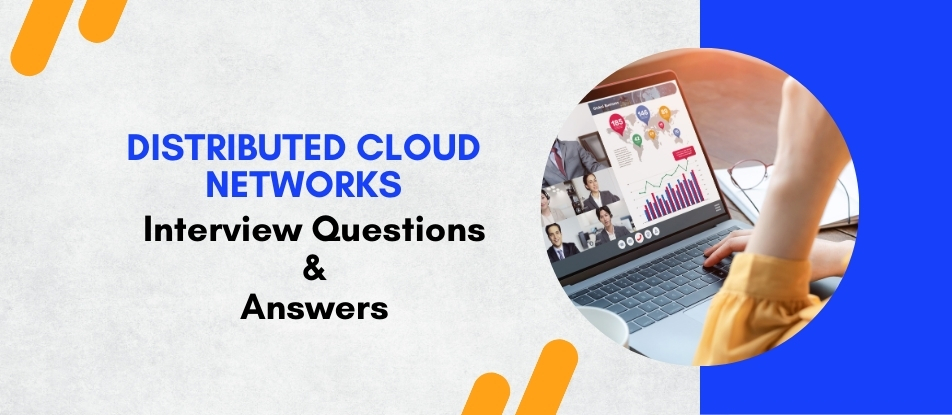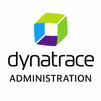
Distributed Cloud Networks Online Training offers a comprehensive understanding of managing cloud services across multiple locations and providers. This course covers key concepts like edge computing, cloud networking architecture, and hybrid cloud deployment. Gain practical skills to optimize performance, ensure security, and streamline operations across distributed environments, preparing you for advanced roles in cloud infrastructure management.
Distributed Cloud Networks Interview Questions Answers - For Intermediate
1. What is a Distributed Cloud Network?
A Distributed Cloud Network extends cloud services across multiple physical locations, often closer to end-users. It leverages edge computing to reduce latency, improve performance, and enhance reliability. By distributing resources geographically, it ensures better scalability, fault tolerance, and efficient data processing, catering to diverse application needs and enabling seamless user experiences.
2. How does edge computing integrate with distributed cloud networks?
Edge computing complements distributed cloud networks by processing data closer to its source. This minimizes latency, reduces bandwidth usage, and enhances real-time data handling. By deploying computing resources at the network's edge, it supports applications requiring rapid response times, such as IoT devices, autonomous vehicles, and smart cities, thereby improving overall system efficiency.
3. What are the key benefits of using a distributed cloud network?
Key benefits include reduced latency, enhanced scalability, improved reliability, and better data sovereignty compliance. Distributed cloud networks offer increased fault tolerance by decentralizing resources, optimizing performance by locating services nearer to users, and ensuring data remains within specific geographical boundaries, meeting regulatory requirements effectively.
4. Explain the concept of data sovereignty in distributed cloud networks.
Data sovereignty refers to the legal and regulatory requirements that data must reside within specific geographical boundaries. In distributed cloud networks, it ensure that data storage and processing comply with local laws regarding privacy, security, and governance. This is crucial for multinational organizations to meet diverse jurisdictional mandates and maintain data integrity.
5. What role does virtualization play in distributed cloud networks?
Virtualization abstracts physical hardware, enabling the creation of scalable and flexible virtual resources. In distributed cloud networks, it facilitate efficient resource management, isolation, and deployment across multiple locations. Virtual machines and containers allow for rapid scaling, easier maintenance, and better utilization of infrastructure, enhancing overall network agility and performance.
6. Describe the importance of network latency in distributed cloud networks.
Network latency is the delay between a user's request and the response from the server. In distributed cloud networks, minimizing latency is crucial for applications requiring real-time interactions, such as gaming, video streaming, and financial transactions. Lower latency improves user experience, ensures timely data processing, and supports high-performance applications effectively.
7. How does a Content Delivery Network (CDN) relate to distributed cloud networks?
A CDN is a type of distributed cloud network optimized for delivering content quickly to users. It caches content at multiple geographically dispersed edge locations, reducing latency and improving load times. By distributing data closer to end-users, CDNs enhance performance, scalability, and reliability for web services, streaming platforms, and other content-heavy applications.
8. What security challenges are unique to distributed cloud networks?
Unique security challenges include managing distributed access points, ensuring data consistency across locations, protecting against diverse threat vectors, and maintaining compliance with various regional regulations. Additionally, securing inter-node communications, handling data encryption across multiple sites, and implementing robust identity and access management are critical to safeguarding distributed cloud environments.
9. Explain the concept of multi-tenancy in distributed cloud networks.
Multi-tenancy allows multiple users or organizations to share the same physical infrastructure while keeping their data and applications isolated. Distributed cloud networks, it maximize resource utilization, reduce costs, and simplify management. Effective multi-tenancy ensures security and privacy for each tenant, enabling scalable and efficient service delivery across diverse users.
10. What is a service mesh and its role in distributed cloud networks?
A service mesh is a dedicated infrastructure layer that manages service-to-service communication within distributed cloud networks. It provides features like load balancing, traffic management, security, and observability without altering application code. By handling interconnections, a service mesh enhances reliability, scalability, and security for microservices architectures in distributed environments.
11. How do distributed cloud networks support disaster recovery?
Distributed cloud networks enhance disaster recovery by replicating data and services across multiple geographic locations. This redundancy ensures that if one site fails, others can seamlessly take over, minimizing downtime and data loss. Additionally, distributed architectures allow for faster data restoration and business continuity, making systems more resilient against various disruptions.
12. What is the role of orchestration in distributed cloud networks?
Orchestration automates the deployment, management, and coordination of resources across distributed cloud networks. It ensures seamless integration and operation of diverse services, handles scaling, manages dependencies, and optimizes resource allocation. Effective orchestration enhances efficiency, reduces manual intervention, and maintains consistency across multiple cloud environments.
13. Describe the impact of 5G on distributed cloud networks.
5G significantly enhances distributed cloud networks by providing faster, more reliable connectivity with lower latency. This enables real-time data processing, supports a higher density of connected devices, and facilitates advanced applications like augmented reality, IoT, and autonomous systems. The synergy between 5G and distributed clouds drives innovation and improves overall network performance.
14. What is the difference between public and private distributed cloud
Public distributed cloud networks are operated by third-party providers and offer services over the Internet to multiple tenants. They provide scalability and cost-efficiency. Private distributed cloud networks, however, are dedicated to a single organization, offering greater control, enhanced security, and compliance. The choice depends on specific business needs, regulatory requirements, and desired level of customization.
15. How do APIs facilitate distributed cloud network operations?
APIs enable seamless interaction and integration between different services and components within distributed cloud networks. They allow applications to communicate, share data, and utilize resources efficiently. By providing standardized interfaces, APIs simplify automation, enhance interoperability, and support the development of scalable, modular architectures essential for distributed environments.
16. What are microservices and their significance in distributed cloud networks?
Microservices are small, independent services that perform specific functions within an application. In distributed cloud networks, they allow for modular development, scalability, and easier maintenance. Each microservice can be deployed, updated, and scaled independently, enhancing flexibility and resilience. This architecture supports continuous delivery and efficient resource utilization in distributed environments.
17. Explain the concept of hybrid cloud in the context of distributed cloud networks.
A hybrid cloud combines public and private cloud resources, enabling data and applications to move seamlessly between them. In distributed cloud networks, offers flexibility to leverage the scalability of public clouds while maintaining control and security over sensitive data in private clouds. This approach optimizes performance, cost, and compliance, catering to diverse business requirements.
18. What is Kubernetes and its role in distributed cloud networks?
Kubernetes is an open-source container orchestration platform that automates the deployment, scaling, and management of containerized applications. In distributed cloud networks, Kubernetes facilitates efficient resource utilization, ensures high availability, and manages workloads across multiple environments. It supports microservices architectures, enabling scalable and resilient application deployments.
19. How does load balancing work in distributed cloud networks?
Load balancing distributes incoming network traffic across multiple servers or resources to ensure no single node is overwhelmed. Distributed cloud networks enhance performance, reliability, and scalability by optimizing resource usage and preventing bottlenecks. Advanced load balancers can dynamically adjust to traffic patterns, providing seamless user experiences and efficient handling of high-demand scenarios.
20. What are the common protocols used in distributed cloud networks?
Common protocols include HTTP/HTTPS for web communication, MQTT for IoT devices, gRPC for efficient service-to-service interactions, and TCP/IP for fundamental network communication. Additionally, protocols like DNS for domain resolution, SSL/TLS for security, and REST or GraphQL for APIs are essential. These protocols ensure reliable, secure, and efficient data exchange across distributed cloud infrastructures.
Distributed Cloud Networks Interview Questions Answers - For Advanced
1. Explain the key differences between distributed cloud and traditional centralized cloud architectures.
Distributed cloud disperses computing resources across multiple geographical locations, enhancing latency and resilience. Unlike centralized clouds, which rely on single or few large data centers, distributed clouds utilize edge locations to process data closer to users. This architecture improves performance, scalability, and fault tolerance while addressing data sovereignty and compliance by localizing data storage and processing.
2. How does edge computing integrate with distributed cloud networks to enhance performance?
Edge computing complements distributed cloud by processing data near the data source, reducing latency and bandwidth usage. By deploying computing resources at the network's edge, distributed clouds enable real-time data analysis and faster response times. This integration is crucial for applications like IoT, autonomous vehicles, and AR/VR, where immediate data processing is essential for optimal performance and user experience.
3. What are the primary security challenges in distributed cloud networks, and how can they be mitigated?
Key security challenges include data privacy, secure data transmission, and consistent security policies across diverse locations. Mitigation strategies involve implementing robust encryption, multi-factor authentication, and centralized security management. Additionally, using zero-trust architectures, regular security audits, and compliance with regional regulations help safeguard distributed cloud environments against threats and vulnerabilities.
4. Describe the role of orchestration tools in managing distributed cloud infrastructures.
Orchestration tools automate the deployment, management, and scaling of applications across distributed cloud environments. They ensure seamless coordination of resources, handle workload distribution and maintain consistency across multiple locations. Tools like Kubernetes and Terraform enable efficient resource allocation, monitor performance, and facilitate integration with various cloud services, enhancing operational efficiency and reducing manual intervention.
5. How is data consistency maintained across distributed cloud networks, and what protocols support it?
Data consistency in distributed clouds is maintained through replication, synchronization, and consensus protocols. Techniques like eventual consistency, strong consistency, and quorum-based protocols (e.g., Paxos, Raft) ensure that all nodes have a consistent view of data. Additionally, distributed databases and data partitioning strategies help manage consistency while balancing performance and availability across the network.
6. What are the advantages and disadvantages of using a multi-cloud strategy within distributed cloud networks?
Advantages:
- Redundancy and Reliability: Reduces dependency on a single provider.
- Flexibility: Leverages best services from different providers.
- Cost Optimization: Competitive pricing and resource allocation.
Disadvantages:
- Complex Management: Increased complexity in orchestration.
- Security Risks: Diverse security protocols.
- Data Integration Challenges: Ensuring seamless data flow across platforms.
7. Explain how microservices architecture benefits distributed cloud networks.
Microservices architecture decomposes applications into smaller, independent services, enhancing scalability and flexibility in distributed clouds. Each service can be deployed, updated, and scaled independently, allowing for efficient resource utilization and faster development cycles. This modularity also improves fault isolation and enables organizations to leverage diverse technologies and services across the distributed infrastructure.
8. Discuss the impact of network latency on distributed cloud performance and strategies to minimize it.
Network latency can degrade the performance of distributed cloud applications by delaying data transmission and processing. To minimize latency, strategies include deploying edge servers closer to users, optimizing routing paths, using content delivery networks (CDNs), and implementing efficient data caching mechanisms. Additionally, leveraging high-speed network connections and protocols like HTTP/2 or QUIC can further reduce latency and enhance user experience.
9. What role does virtualization play in the scalability of distributed cloud networks?
Virtualization abstracts physical hardware, enabling the creation of scalable and flexible virtual resources in distributed clouds. It allows dynamic allocation of computing, storage, and networking resources based on demand. Virtual machines and containers facilitate efficient resource utilization, rapid deployment, and isolation of workloads, thereby enhancing the scalability and manageability of distributed cloud infrastructures to meet varying application requirements.
10. How do Service Level Agreements (SLAs) differ in distributed cloud environments compared to centralized clouds?
SLAs must account for multiple geographic locations, varying performance metrics, and diverse regulatory requirements in distributed clouds. They often include guarantees on data sovereignty, regional availability, and latency targets specific to each edge location. Unlike centralized clouds, distributed SLAs require more granular monitoring and management to ensure consistent service quality across all distributed nodes and address the complexities of a dispersed infrastructure.
Course Schedule
| Dec, 2025 | Weekdays | Mon-Fri | Enquire Now |
| Weekend | Sat-Sun | Enquire Now | |
| Jan, 2026 | Weekdays | Mon-Fri | Enquire Now |
| Weekend | Sat-Sun | Enquire Now |
Related Courses
Related Articles
- CyberArk Explained: How It Protects Privileged Accounts from Cyber Threats
- CI/CD Pipeline: The Backbone of Modern Software Development
- How to Earn SAP BI (Business Intelligence) Certification Online
- Today 80% MNC Companies Recruit SAP Professionals
- Get Certified in Salesforce App Builder (DEV 401) for Career Growth
Related Interview
Related FAQ's
- Instructor-led Live Online Interactive Training
- Project Based Customized Learning
- Fast Track Training Program
- Self-paced learning
- In one-on-one training, you have the flexibility to choose the days, timings, and duration according to your preferences.
- We create a personalized training calendar based on your chosen schedule.
- Complete Live Online Interactive Training of the Course
- After Training Recorded Videos
- Session-wise Learning Material and notes for lifetime
- Practical & Assignments exercises
- Global Course Completion Certificate
- 24x7 after Training Support











 Join our Live Instructor-Led online classes delivered by industry experts
Join our Live Instructor-Led online classes delivered by industry experts